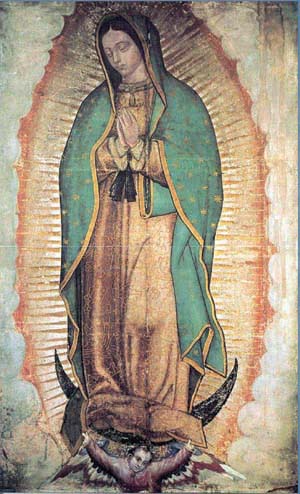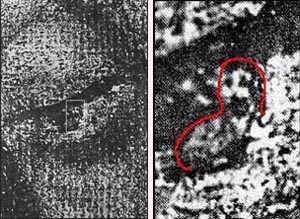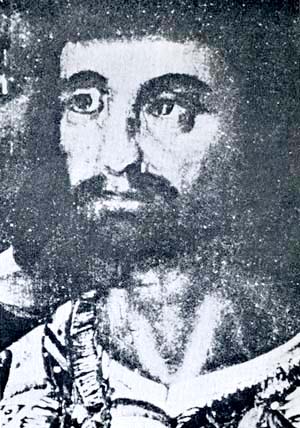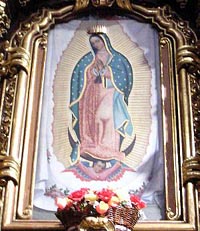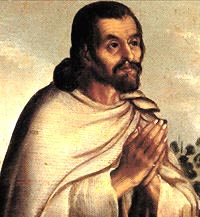August 28, 1774 – January 4, 1821
Early Life
Despite being born into the wealthy and Prominent Bayley family of New York, Saint Elizabeth Ann Seton's story is one stalked by tragedy and the death of her loved ones.
Both her maternal and paternal grandparents came from strongly religious backgrounds and the young Elizabeth was raised in the Episcopalian church. This combined with the loss of her mother aged 3 probably led to her quiet lifestyle of reading and contemplation.
Although Elizabeth's father remarried the year after his wife's death, her stepmother rejected both Saint Elizabeth and her sister so their father was forced to pack them off to live with their uncle, they stayed with him until their father's new marriage ended in separation. Elizabeth later identified this as one of many dark periods in her life.
Even in the darkest life there are moments of happiness and Saint Elizabeth's was her marriage to William Magee Seton. It was blessed with four children but yet again tragedy struck after four years when Will's father died.
Will was left with responsibility for the family business and his seven half brothers and sisters. Shortly afterwards the business lost several ships at sea, this loss was never recovered and bankruptcy was the only possible solution.
The stress damaged Will's health irrevocably and he succumbed to Tuberculosis. Desperate to improve his failing health, Elizabeth and their oldest daughter Anna Maria set sail with him to Italy where they hoped the warm climate and company of friends (The Filicchis) would improve Will's prospects.
This was not to be as when they arrived the Italian authorities quarantined them in a cold, dank lazaretto for a month due to fears of yellow fever. Will died a mere two weeks after they were released.
This left St Elizabeth a widow at 29 with sole charge of five young children. She remained in Italy with the Filichis for a year and in a desperate attempt to provide her with some measure of peace they introduced her to Catholicism.
Although this was to guide her steps towards her charity works and eventual canonization, initially it created many problems due to Elizabeth's Episcopalian background and doubts over conversion. It infuriated her family and friends who universally turned their backs on her leaving her reliant on the good will of her Italian friends.

Saint Elizabeth's conversion to Roman Catholicism
Death continued to take its toll with the loss of her daughter Anna Maria and her beloved sister in law Rebecca and there were the on-going problems of caring for young children with a minimal income.
In 1805, two years after her husband's death, Saint Elizabeth's doubts resolved and the Reverend Matthew O’Brien received her into the Catholic faith.
Despite this happy event Saint Elizabeth struggled for the next few years with the twin spectres of prejudice and poverty as she tried to acquire teaching work that would support her children. Despite her belief in God she remained a mother above all things.
For her unstinting faith Saint Elizabeth was rewarded in due course by her providential meeting with the Reverend Louis William Dubourg in 1806.
She accompanied him back to Baltimore where with the aid of the Sulpicians she would be a schoolmistress in a small school for children.
The Sulpicians were in the process of forming a small community based on the Daughters of Charity in Paris and Soon Saint Elizabeth joined this growing community. On March 25 1809 She swore vows of chastity and obedience to Archbishop John Carroll, he gave her the title ‘Mother Seton’ and in June she appeared with the sisters who were all dressed in black dress, cape and bonnet styled on Italian mourning dress.
The Sisters of Charity of St Josephs
A wealthy convert named Samuel Sutherland Cooper wished to begin an educational program for catholic girls and he made the wise choice of Saint Elizabeth to run it.

He purchased 269 acres near Emmitsburg in Maryland .
Tradition has it that Saint Elizabeth named the area St Joseph's valley and opened St Joseph's free school in 1810. This was the first Catholic free school for girls in America and with the opening of the St Joseph's Academy which accepted boarders meaning that the Sister's could subsidize their charitable mission the number of girls they could educate grew and grew.
Saint Elizabeth Seton was elected Mother of the Order and continued to fulfil that capacity until her death. In this capacity she dispatched sisters across America to combine education with social ministries such as St Joseph's Asylum, which was the first Catholic Orphanage in the US.
Combined with her inspirational writings and her care of poor families, orphans and widows Mother Seton made a lasting impact on catholic education and charity not only in America but also across the world.
The Sisters of Charity continue to make Saint Elizabeth Ann Seton s ideals a reality and to improve the lives of those oppressed by poverty to this day.

St. Elizabeth Ann Seton Feast Day
Other than the numerous schools and colleges named after her there is a particular shrine dedicated to Saint Elizabeth Seton.
The town of Emmitsburg where she spent the majority of her life has built an outstanding Basilica where her remains are interred. They also have a museum and visitor center along with many buildings from her time there, which have been preserved for posterity.
Along with regular celebrations throughout the year such as The Stations of the Cross on Good Friday, they hold celebrations of St Elizabeth Ann Seton Feast on the 4th of January to which all are welcome.
Notably there is an annual pilgrimage for those in the Sea Services and their families on the 5th of October celebrating Mother Seton's role as Patroness of the Sea Services.
A shrine to Saint Elizabeth Seton can also be found in her birthplace of New York.
Located on 7 State Street, New York the striking colonial building in which she lived now houses a Catholic community who continue her good works.
It is also the home of the Our Lady of the Rosary Mission. In its time the Mission befriended more than 100,000 immigrant girls (of which 65,000 are listed in the parish archives).
Many of these came to America poor, Starving and friendless fleeing from the famine in Ireland. The shrine fed them, clothed them and sent them out into the new world of America armed with shelter and employment, meaning that there are many families who wouldn't exist if it wasn't for the free help and assistance provided before the inception of Ellis Island.
Around the world The Sisters of Charity of Saint Josephs continue to follow Saint Elizabeth's example by becoming life long pilgrims in Christ's service and celebrating God's love and Saint Elizabeth's example through their daily ministrations to the poor and work in education.
Comment
Elizabeth Seton had no extraordinary gifts. She was not a mystic or stigmatic. She did not prophesy or speak in tongues. She had two great devotions: abandonment to the will of God and an ardent love for the Blessed Sacrament. She wrote to a friend, Julia Scott, that she would prefer to exchange the world for a “cave or a desert.” “But God has given me a great deal to do, and I have always and hope always to prefer his will to every wish of my own.” Her brand of sanctity is open to everyone if we love God and do his will.
Quotes by St. Elizabeth Ann Seton
Elizabeth Seton told her sisters, “The first end I propose in our daily work is to do the will of God; secondly, to do it in the manner he wills it; and thirdly, to do it because it is his will.”
"We must pray without ceasing, in every occurrence and employment of our lives - that prayer which is rather a habit of lifting up the heart to God as in a constant communication with Him."
"The first end I propose in our daily work is to do the will of God; secondly, to do it in the manner he wills it; and thirdly to do it because it is his will. "
"The accidents of life separate us from our dearest friends, but let us not despair. God is like a looking glass in which souls see each other. The more we are united to Him by love, the nearer we are to those who belong to Him."
"And in every disappointment, great or small, let your heart fly directly to your dear Savior, throwing yourself in those arms for refuge against every pain and sorrow. Jesus will never leave you or forsake you."
"God is everywhere, in the very air I breathe, yes everywhere, but in His Sacrament of the Altar He is as present actually and really as my soul within my body; in His Sacrifice daily offered as really as once offered on the Cross."
“The heart preparing to receive the Holy Eucharist should be like a crystal vase.”"We must pray without ceasing, in every occurrence and employment of our lives - that prayer which is rather a habit of lifting up the heart to God as in a constant communication with Him."
Prayer by Saint Elizabeth Ann Seton
O Father, the first rule of Our dear Savior's life was to do Your Will. Let His Will of the present moment be the first rule of our daily life and work, with no other desire but for its most full and complete accomplishment. Help us to follow it faithfully, so that doing what You wish we will be pleasing to You. Amen.
Patronage
Early Life
Despite being born into the wealthy and Prominent Bayley family of New York, Saint Elizabeth Ann Seton's story is one stalked by tragedy and the death of her loved ones.
Both her maternal and paternal grandparents came from strongly religious backgrounds and the young Elizabeth was raised in the Episcopalian church. This combined with the loss of her mother aged 3 probably led to her quiet lifestyle of reading and contemplation.
Although Elizabeth's father remarried the year after his wife's death, her stepmother rejected both Saint Elizabeth and her sister so their father was forced to pack them off to live with their uncle, they stayed with him until their father's new marriage ended in separation. Elizabeth later identified this as one of many dark periods in her life.
Even in the darkest life there are moments of happiness and Saint Elizabeth's was her marriage to William Magee Seton. It was blessed with four children but yet again tragedy struck after four years when Will's father died.
Will was left with responsibility for the family business and his seven half brothers and sisters. Shortly afterwards the business lost several ships at sea, this loss was never recovered and bankruptcy was the only possible solution.
The stress damaged Will's health irrevocably and he succumbed to Tuberculosis. Desperate to improve his failing health, Elizabeth and their oldest daughter Anna Maria set sail with him to Italy where they hoped the warm climate and company of friends (The Filicchis) would improve Will's prospects.
This was not to be as when they arrived the Italian authorities quarantined them in a cold, dank lazaretto for a month due to fears of yellow fever. Will died a mere two weeks after they were released.
This left St Elizabeth a widow at 29 with sole charge of five young children. She remained in Italy with the Filichis for a year and in a desperate attempt to provide her with some measure of peace they introduced her to Catholicism.
Although this was to guide her steps towards her charity works and eventual canonization, initially it created many problems due to Elizabeth's Episcopalian background and doubts over conversion. It infuriated her family and friends who universally turned their backs on her leaving her reliant on the good will of her Italian friends.

Saint Elizabeth's conversion to Roman Catholicism
Death continued to take its toll with the loss of her daughter Anna Maria and her beloved sister in law Rebecca and there were the on-going problems of caring for young children with a minimal income.
In 1805, two years after her husband's death, Saint Elizabeth's doubts resolved and the Reverend Matthew O’Brien received her into the Catholic faith.
Despite this happy event Saint Elizabeth struggled for the next few years with the twin spectres of prejudice and poverty as she tried to acquire teaching work that would support her children. Despite her belief in God she remained a mother above all things.
For her unstinting faith Saint Elizabeth was rewarded in due course by her providential meeting with the Reverend Louis William Dubourg in 1806.
She accompanied him back to Baltimore where with the aid of the Sulpicians she would be a schoolmistress in a small school for children.
The Sulpicians were in the process of forming a small community based on the Daughters of Charity in Paris and Soon Saint Elizabeth joined this growing community. On March 25 1809 She swore vows of chastity and obedience to Archbishop John Carroll, he gave her the title ‘Mother Seton’ and in June she appeared with the sisters who were all dressed in black dress, cape and bonnet styled on Italian mourning dress.
The Sisters of Charity of St Josephs
A wealthy convert named Samuel Sutherland Cooper wished to begin an educational program for catholic girls and he made the wise choice of Saint Elizabeth to run it.

He purchased 269 acres near Emmitsburg in Maryland .
Tradition has it that Saint Elizabeth named the area St Joseph's valley and opened St Joseph's free school in 1810. This was the first Catholic free school for girls in America and with the opening of the St Joseph's Academy which accepted boarders meaning that the Sister's could subsidize their charitable mission the number of girls they could educate grew and grew.
Saint Elizabeth Seton was elected Mother of the Order and continued to fulfil that capacity until her death. In this capacity she dispatched sisters across America to combine education with social ministries such as St Joseph's Asylum, which was the first Catholic Orphanage in the US.
Combined with her inspirational writings and her care of poor families, orphans and widows Mother Seton made a lasting impact on catholic education and charity not only in America but also across the world.
The Sisters of Charity continue to make Saint Elizabeth Ann Seton s ideals a reality and to improve the lives of those oppressed by poverty to this day.

St. Elizabeth Ann Seton Feast Day
Other than the numerous schools and colleges named after her there is a particular shrine dedicated to Saint Elizabeth Seton.
The town of Emmitsburg where she spent the majority of her life has built an outstanding Basilica where her remains are interred. They also have a museum and visitor center along with many buildings from her time there, which have been preserved for posterity.
Along with regular celebrations throughout the year such as The Stations of the Cross on Good Friday, they hold celebrations of St Elizabeth Ann Seton Feast on the 4th of January to which all are welcome.
Notably there is an annual pilgrimage for those in the Sea Services and their families on the 5th of October celebrating Mother Seton's role as Patroness of the Sea Services.
A shrine to Saint Elizabeth Seton can also be found in her birthplace of New York.
Located on 7 State Street, New York the striking colonial building in which she lived now houses a Catholic community who continue her good works.
It is also the home of the Our Lady of the Rosary Mission. In its time the Mission befriended more than 100,000 immigrant girls (of which 65,000 are listed in the parish archives).
Many of these came to America poor, Starving and friendless fleeing from the famine in Ireland. The shrine fed them, clothed them and sent them out into the new world of America armed with shelter and employment, meaning that there are many families who wouldn't exist if it wasn't for the free help and assistance provided before the inception of Ellis Island.
Around the world The Sisters of Charity of Saint Josephs continue to follow Saint Elizabeth's example by becoming life long pilgrims in Christ's service and celebrating God's love and Saint Elizabeth's example through their daily ministrations to the poor and work in education.
Elizabeth Seton had no extraordinary gifts. She was not a mystic or stigmatic. She did not prophesy or speak in tongues. She had two great devotions: abandonment to the will of God and an ardent love for the Blessed Sacrament. She wrote to a friend, Julia Scott, that she would prefer to exchange the world for a “cave or a desert.” “But God has given me a great deal to do, and I have always and hope always to prefer his will to every wish of my own.” Her brand of sanctity is open to everyone if we love God and do his will.
Quotes by St. Elizabeth Ann Seton
Elizabeth Seton told her sisters, “The first end I propose in our daily work is to do the will of God; secondly, to do it in the manner he wills it; and thirdly, to do it because it is his will.”
"We must pray without ceasing, in every occurrence and employment of our lives - that prayer which is rather a habit of lifting up the heart to God as in a constant communication with Him."
"The first end I propose in our daily work is to do the will of God; secondly, to do it in the manner he wills it; and thirdly to do it because it is his will. "
"The accidents of life separate us from our dearest friends, but let us not despair. God is like a looking glass in which souls see each other. The more we are united to Him by love, the nearer we are to those who belong to Him."
"And in every disappointment, great or small, let your heart fly directly to your dear Savior, throwing yourself in those arms for refuge against every pain and sorrow. Jesus will never leave you or forsake you."
"God is everywhere, in the very air I breathe, yes everywhere, but in His Sacrament of the Altar He is as present actually and really as my soul within my body; in His Sacrifice daily offered as really as once offered on the Cross."
“The heart preparing to receive the Holy Eucharist should be like a crystal vase.”"We must pray without ceasing, in every occurrence and employment of our lives - that prayer which is rather a habit of lifting up the heart to God as in a constant communication with Him."
O Father, the first rule of Our dear Savior's life was to do Your Will. Let His Will of the present moment be the first rule of our daily life and work, with no other desire but for its most full and complete accomplishment. Help us to follow it faithfully, so that doing what You wish we will be pleasing to You. Amen.
Prayer in Honor of St. Elizabeth Ann Seton
Lord God, you blessed Elizabeth Ann Seton with gifts of grace as wife and mother, educator and foundress, so that she might spend her life in service to your people.
Through her example and prayers, may we, whose Faith Community is dedicated in her honor, learn to express our love for you in our love for all your children.
We ask this through Christ, Our Lord. Amen.
Patronage
- against in-law problems
- against the death of children
- against the death of parents
- Apostleship of the Sea (two of her sons worked on the sea)
- opposition of Church authorities
- people ridiculed for their piety
- Shreveport, Louisiana, diocese of
- widows
Miracles
As a pre-condition for canonization, the Catholic Church requires that for a saint who has not been martyred, at least two miracles take place at his or her intercession.[9] The Holy See recognised that this pre-condition was met by attributing three miracles to Elizabeth's intercession:
Curing Sister Gertrude Korzendorfer of cancer;
Curing Ann Theresa O’Neill of acute lymphatic leukemia; and
Curing Carl Kalin of encephalitis.
As a pre-condition for canonization, the Catholic Church requires that for a saint who has not been martyred, at least two miracles take place at his or her intercession.[9] The Holy See recognised that this pre-condition was met by attributing three miracles to Elizabeth's intercession:
Curing Sister Gertrude Korzendorfer of cancer;
Curing Ann Theresa O’Neill of acute lymphatic leukemia; and
Curing Carl Kalin of encephalitis.
References
http://saints.sqpn.com/saint-elizabeth-ann-seton/
http://www.stelizabethseton.webhero.com/st_elizabeth_ann_seton_feast%20.html
http://www.catholic.org/saints/saint.php?saint_id=180
http://www.americancatholic.org/features/saintofday/
http://catholicfire.blogspot.com/2012/01/feast-day-of-st-elizabeth-ann-seton.html
http://catholicdaily.net/faith/2012/01/04/st-elizabeth-ann-seton/
http://en.wikipedia.org/wiki/Elizabeth_Ann_Seton
http://www.setonchurch.org/patronsaint.html
http://www.scny.org/charitywisdom-late_summer10.html
http://www.stelizabethseton.webhero.com/st_elizabeth_ann_seton_feast%20.html
http://www.catholic.org/saints/saint.php?saint_id=180
http://www.americancatholic.org/features/saintofday/
http://catholicfire.blogspot.com/2012/01/feast-day-of-st-elizabeth-ann-seton.html
http://catholicdaily.net/faith/2012/01/04/st-elizabeth-ann-seton/
http://en.wikipedia.org/wiki/Elizabeth_Ann_Seton
http://www.setonchurch.org/patronsaint.html
http://www.scny.org/charitywisdom-late_summer10.html
 |
Basilica at the National Shrine of St. Elizabeth Ann Seton, Emmitsburg, Maryland |















